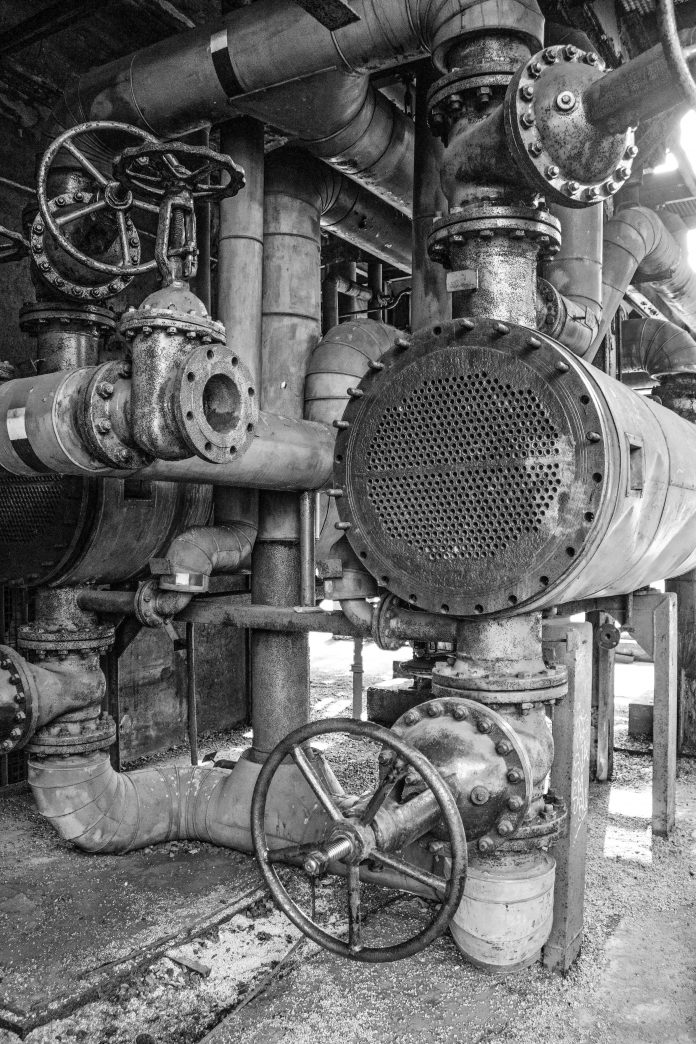Whether a ball, gate, angle seat, butterfly, or solenoid valve is used is often determined by what is already in place or by tradition. For efficient and low-cost flow, butterfly and gate valves are commonly used in water treatment plants.
When it comes to valves, there’s a bit of a gray area around some uses, where a few different options could work. Selecting the best valve for an industrial process is not always black and white.
Here are some guidelines for determining which process valve will work best for your needs. The butterfly vs gate valve comparison serves as a general rule of thumb, but it may not apply to more specific or extreme uses.
1.Temperature
Valve selection is heavily influenced by the operating temperature of the surrounding environment and the temperature of the system media passing through the valve. Since expansion and contraction of sealing materials can occur in response to temperature changes, knowing if the temperatures will be stable or fluctuate frequently can help guide your valve selection.
First and foremost, you should verify with the manufacturer that the valve in question has been subjected to rigorous testing at high and low temperatures and pressures.
When exposed to higher temperatures, metallic parts can lose strength and become less pressure-resistant. Make sure the valve you pick is suitable for the job.
2.Media
When choosing a valve, think carefully about the fluid in the system. The materials used for valve bodies, seats, stem tips, and other soft parts must be compatible with the fluid. It is just like selecting the best parts for your car by a reputable engine parts wholesale.
Corrosion, embrittlement, and stress corrosion cracking could compromise safety and slow down production if not prevented. When choosing a construction material, it is important to consider the valve’s operating environment. The valve could be extreme heat or cold if the instrument housing it is heated.
It might have to stand up to the sun’s heat, the air’s wetness, or the cold of snow, ice, or frost. It’s possible to use it in a marine setting where high levels of chlorides are present. Select valves designed specifically for use in these environments for increased durability and performance.
3.Conditions for Performance
Find out what the necessary pressure and temperature are. Determine the operating pressure and temperature limits of the valve’s intended application.
Metal valves are more robust in extreme conditions than their plastic counterparts. Pressured gases typically fare best with metal valves because they are typically more durable than their plastic counterparts.
4.Size
The flow capacity of a valve is determined by its size, and this value must be in harmony with the required flow rate of the system. Determine the valve’s suitability by looking at its flow coefficient (Cv), which is the ratio of the pressure drop across the valve to the flow rate.
A valve’s flow capacity (Cv) is affected by its orifice size and geometry. The Cv is also affected by the valve’s design and operation; a ball valve, for instance, will provide minimal flow resistance when actuated, while a needle valve will restrict or slow down the flow.
5.End Connections
Maintaining leak-free systems requires careful consideration when selecting valve end connections. Some examples of these end connections are integral tube fittings, pipe threads, pipe flanges, and welded ends.
These joints must be properly sized and rated for the system’s operating pressure and temperature. The correct end connection can streamline the assembly process and prevent unnecessary leaks.
6.Pressure
The chosen valve must be able to withstand a wide variety of temperatures and pressures while still functioning reliably when called upon. Pressure in a fluid system is limited by its weakest link. Keep this in mind as you shop for valves.
It’s important to differentiate between the “design pressure,” or the maximum allowable pressure, and the “working pressure,” or the normal operating pressure of the system. No part of a fluid system should ever be subjected to a working pressure higher than its design pressure.
7.Delivery
The last thing to think about when making a choice is the valve itself, but rather how you will acquire one in an emergency. Maintaining a functional and efficient fluid system also requires having access to supplies on time and without interruption.
So, check your suppliers’ reliability and ensure they can access the components you need on short notice. Likewise, ensure that the representatives are easy to get in touch with and willing to assist you in figuring out exactly your system requirements.
Maintaining a higher level of system availability is easier when you work with a provider who stocks new valves and spares.
8.Maintenance
Never overlook the importance of regular upkeep. When deciding on a valve, keeping upkeep costs in mind is important. This is crucial for the valve’s dependability and the application’s consistency.
Ball valves are a good illustration of this principle in action. They don’t get stuck, jam, or break down. That’s why they are often used in highly sensitive territories such as by medical plastic injection molding companies where least defaults are must.
However, they are not appropriate for controlling the flow. Their use as flow regulators is fraught with the risk of leaks and early failure.
The valve’s connection type determines how quickly and easily it can be fixed or replaced. Every type of connection has advantages and disadvantages (threaded, barbed, push-in, Luer, and so on).
Conclusion
Now you have it all!
Choosing the correct valve is simplified and ensured by prior knowledge of relevant details. Application needs, operating conditions, and chemical compatibility are just some of the challenges that will always need to be overcome.












